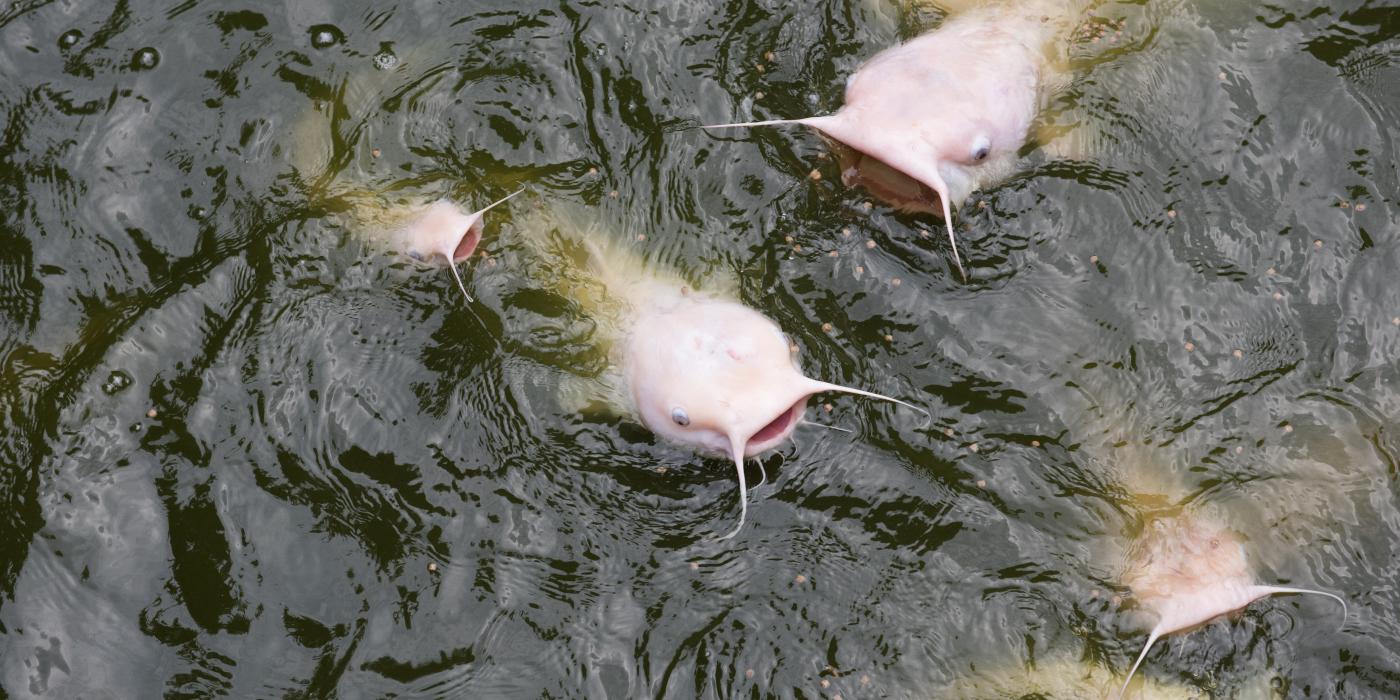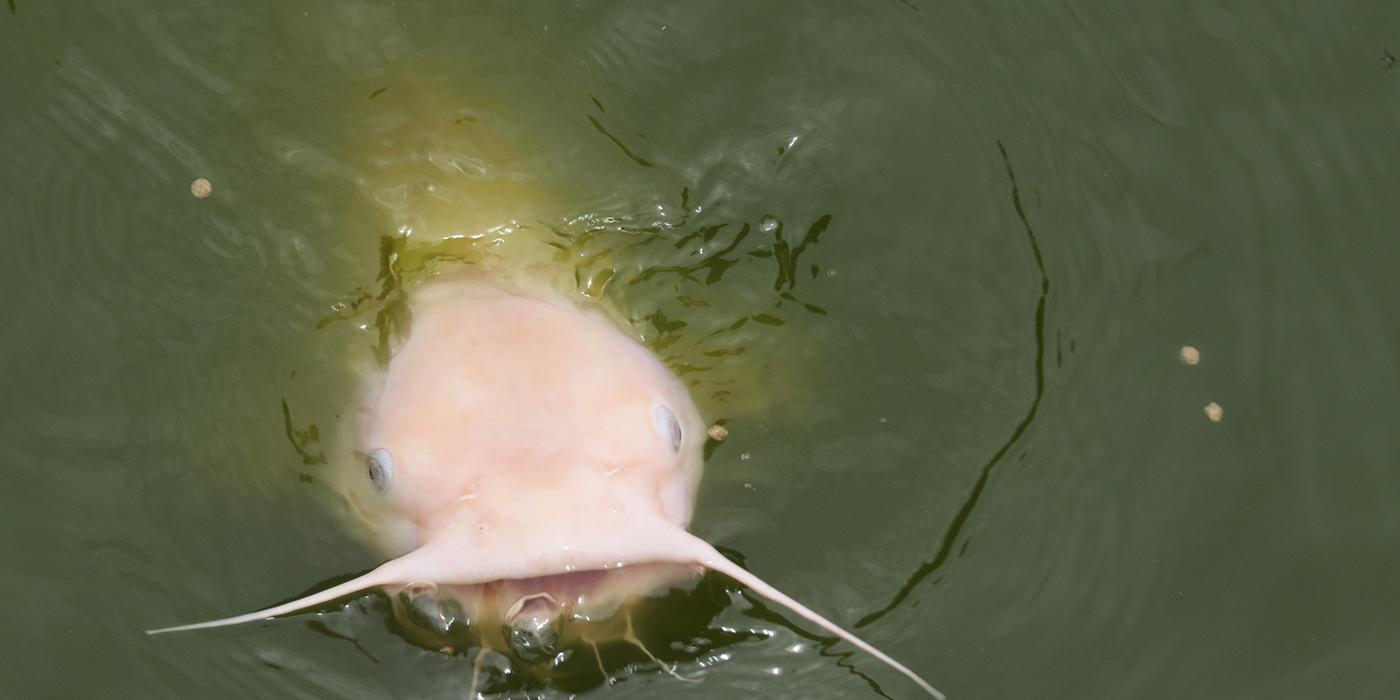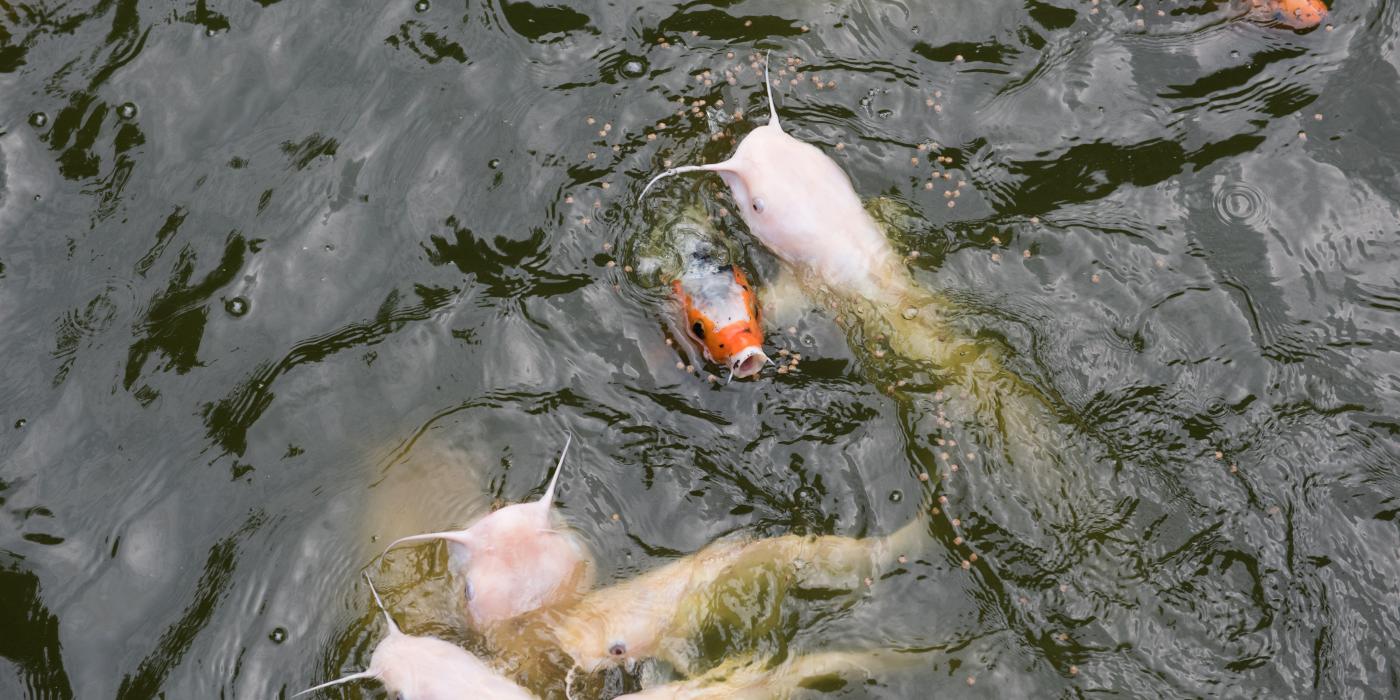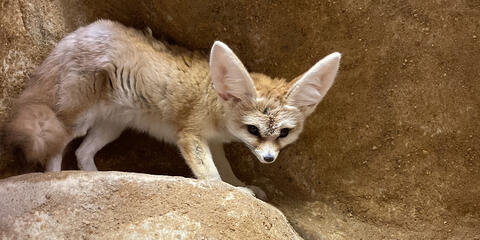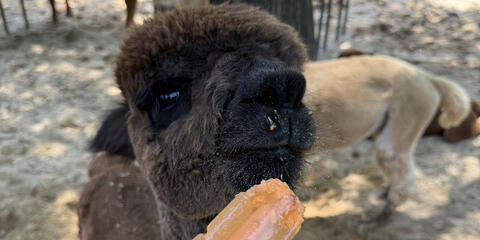Physical Description
Channel catfish typically have grayish-blue sides with a black back and a white belly. Though rare in the wild, a channel catfish can carry the recessive alleles resulting in lack of pigmentation, known as albinism. Albino channel catfish have a peach coloration. Some domestic channel catfish have been bred to carry the recessive albino alleles, with these fish being popular in aquariums and ornamental ponds.
Size
Average mature channel catfishes weigh between two to four pounds and are at least 12 inches (30 centimeters) long. The world record weight for a channel catfish was a 58-pound (26.3 kilograms) fish caught in South Carolina in 1964.
Native Habitat
Channel catfish are the most numerous species of catfish in North America.
Lifespan
Maximum lifespan for channel catfish is believed to be around 15 years.
Food/Eating Habits
Channel catfish are bottom-dwelling, opportunistic omnivores that have excellent senses of smell and taste, which they use to find food in dark and muddy waters. Though catfish have taste receptors all over their body, the highest concentration of receptors is located on the four pairs of barbels (or "whiskers") that surround the mouth
The channel catfish at the Kids' Farm at the Smithsonian's National Zoo are fed a floating pellet, though they also eat aquatic insects, algae and plants that occur naturally in the pond.
Conservation Efforts
Channel catfish are an essential part of fish farming, a type of aquaculture. Catfish make up 46 percent of aquaculture production value in the United States, with channel catfish being the primary species of catfish farmed. Channel catfish make excellent farming fish because they are hardy, they tolerate crowding and a wide range of environmental conditions, and they spawn easily, producing a large number of fry (young) at a time.
Help this Species
- Reduce, reuse and recycle — in that order! Cut back on single-use goods, and find creative ways to reuse products at the end of their life cycle. Choose recycling over trash when possible.
- Organize or attend a stream, river, lake or other waterway cleanup in your area to preserve aquatic habitats for local species.

